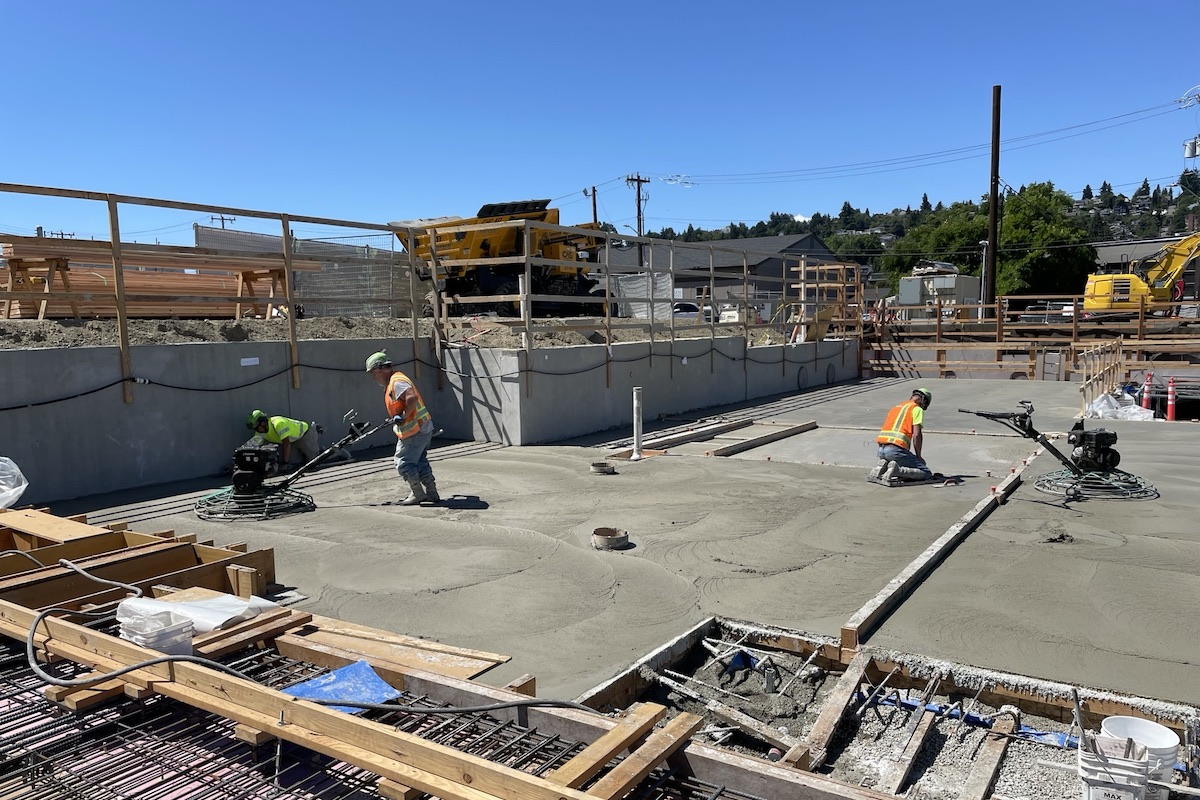“The future of the maritime industry and the ocean economy is innovative, sustainable, and equitable,” Port of Seattle Commissioner Ryan Calkins said. “The Maritime Innovation Center will foster an atmosphere of collaboration and innovation, which will ensure that all the sectors of the maritime industry, from commercial fishing to the growing green maritime economy, have not only a home but an anchor in Seattle.”
To prepare for the next century of commercial fishing and maritime industrial activity at the terminal, the Port is committing over $100 million in new investments as part of a long-term strategic redevelopment plan to maintain docks for commercial fishers, enhance uplands facilities, and accent Fishermen’s Terminal’s history and legacy. On display when the building opens will be a new set of wayfinding and interpretive signs as well as several new art projects as part of the Port’s 1% for the Arts program.
These improvements and investments will ensure this facility will continue to sustain the maritime industry and Seattle’s working waterfront. The maritime industry and the jobs it brings help anchor the regional economy, with this facility supporting the next century of commercial fishing and maritime industrial activity at one of Seattle’s most historic working waterfront properties.
The design and construction of the MInC will follow the LBC framework, the most progressive sustainability standard in the world, in alignment with the Port’s sustainability goals. As a Living Building, the MInC will generate its own energy, capture its own water, and process its own waste. Some of the advanced LBC sustainability and resiliency features include:

| Your local Metso Minerals Industries Inc dealer |
|---|
| PacWest Machinery |
| Westate Machinery Co |
- Net positive energy
- Salvaged materials
- Reduced carbon emissions
- Rainwater capture
- Stormwater treatment
- Gray and black water treatment
The adaptive reuse project will maintain and respect the form and mass of the 1918 building fronting the working waterfront. Most of the building and its century-old heavy timber structure will be salvaged and reused. Miller Hull’s design will enhance the iconic pitched roof by using locally sourced and industrially appropriate materials. Sustainability will be on display with the additions of rainwater cisterns and an on-site photovoltaic array.
"It is an honor to contribute our expertise in sustainable design to this landmark project, which will not only preserve the Ship Supply Building's rich heritage but propel the maritime industry into a more innovative and resilient future,” Miller Hull Principal Mike Jobes, AIA, said. “The Maritime Innovation Center will stand as a testament to the Port of Seattle’s and Miller Hull's shared commitment to sustainability, resilience, and community. We look forward to seeing it become a symbol of innovation on Seattle's waterfront."





































































